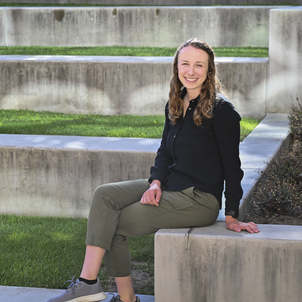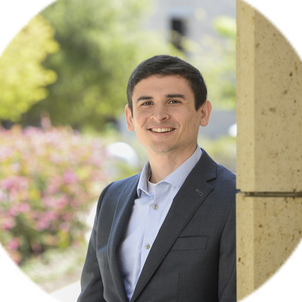English-speaking Guyana (formerly British Guiana) is bordered to the west by Venezuela – they spoke Spanish; to the south by Brazil – Portuguese was the tongue. And, as if that weren’t confusing enough, our immediate neighborhood to the east, in Suriname, was Dutch speaking, and one step further east the language was French. I say all of this to point out that while the conception of South America as a region dominated by Spanish and Hispanic culture is correct for much of the continent, it is quite far from accurate in the north.
I think that stew of cultures produced in me a propensity of getting beyond people’s superficial differences and working together to achieve big, society-altering goals. To me, this philosophy is essential for success as a modern engineer and I believe it is one of the reasons I’ve thrived in a discipline, chemical engineering, that I knew very little about prior to attending college. That sense of breaking apart complex systems into their essential elements – unit operations, and collaboration based on integrating concepts at the boundaries of different fields to solve hard problems in any of these domains – has been with me ever since. It is still with me today as dean of the Cornell School of Engineering.
My time at Cornell began in 2000, during a period when our faculty were incredibly successful in securing large research center grants to support teams of investigators working toward a common goal. Cornell’s experience was, in fact, part of a national trend which saw a shift in research funding patterns away from the lone wolf investigator model. That historical shift underpinned a broader move toward collaborative interdisciplinary science, which you will recognize in my past and which is what I believe led me here.
In Guyana, about age 12, children sit for the common entrance examination, which determines where they attend high school and what subjects they can study. I was one of the lucky 12-year-olds who placed well and was streamed toward science and maths. I had a good time at high school and, among other things, learned quickly that the balance of academics and student leadership was what truly excited me.
In my penultimate year at high school I was appointed head prefect; and by the end of high school had achieved comparable levels of all-round excellence as when I started. The reward was that I received one of the first two International Merit Scholarships – a full tuition scholarship – given by the University of Southern California to a foreign student. It was there, as an undergraduate at USC, that I had my first formal opportunity to pursue research for the total pleasure of it and in the process fell in love with chemical engineering broadly and catalysis especially.
I was inspired by the chemical engineering work happening at Stanford and made my way there for graduate school. I was lucky to work in the lab of Gerald “Gerry” Fuller, a renowned expert in fluid dynamics. Gerry nurtured my passion for manipulating chemistry, physics and math to understand the physical world. He provided the right level of independence and accountability to allow students to grow at their own pace and according to their individual passions.
Under Gerry, I explored the mysteries of fluid dynamics of polymers and developed a new optical spectroscopic method for studying the orientations polymers adopted under external fields. When he became the department chair, I saw firsthand how Gerry balanced his own scholarship, his collaborations with other researchers and his leadership of the department. The lessons I learned, not just about research but about mentorship and leadership, are ones that I still call upon.
After Stanford, I headed to Bell Labs as a postdoc and worked with a man named Ron Larson. He was similar to Gerry – a true a scholar and a leader who balanced those two things in a very elegant and seamless way. Together, we accomplished much in a short period, but academia kept pulling me back.
I accepted a professorship at Texas A&M University, and then, five years later, moved to Cornell, where I’ve been ever since. At Cornell, I was able to focus on what arguably became an obsession – understanding how polymer molecules moved and transmitted stress near solid boundaries. These efforts led to a deep understanding of what it means for large molecules with many internal degrees of freedom to be localized near rigid boundaries that removed some of these freedoms. Perhaps unsurprisingly, in the process I became an authority on the interaction of fluids and solids at the barrier where the two meet – as with water or oil in a pipeline or, more fortuitously for me, in the inner workings of electrochemical cells we loosely term batteries. It was in that specialty – batteries – where I was able to bring it all together: my interest in materials synthesis, polymer behaviors near boundaries, transport, and pursuing research with immediate, real-world impact.
Working with many collaborators in chemical engineering, materials science and other specialties as well as a long stream of exceptional graduate students, we came up with the notion of hybrid materials, part liquid, part solid – a polymer tethered to a solid by hair-like nanoparticles. We called them NOHMs (“gnomes”) – nanoscale organic hybrid materials.
Our discovery of NOHMs opened a world of possibility for us to study many interesting questions. It wasn’t long before we at Cornell and other researchers at other institutions began to imagine applications for NOHMs in all sorts of places. Specifically, in ionic liquids that led to new battery electrolytes. These were extremely good electrolytes, but with one big upside – they didn’t catch fire.
From there, the path to dean seemed a natural step for me. I was committed to scholarship, but also, like Gerald Fuller and Ron Larson before me, I knew I had the ability and the desire to bring people together – to lead them in new directions to hopefully leave things at institutions like Cornell Engineering in better shape than I found them.
Related spotlights

Christine Baker

Thomas Colburn

